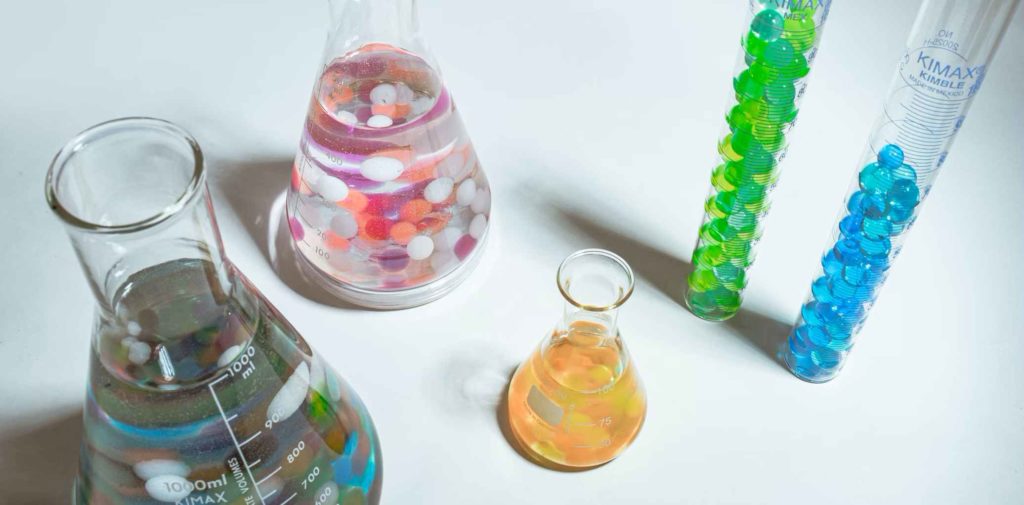Scientific committees and agencies supporting consumer safety and public health: Key players within the European Commission
There are two independent non-food scientific committees, the Scientific Committee on Consumer Safety (SCCS) and the Scientific Committee on Health, Environmental and Emerging Risks (SCHEER), which provide the European Commission with scientific advice on matters related to consumer safety, public health, and the environment.
These committees consist of independent experts who assist the Commission in formulating policies and proposals. These committees also identify any new or emerging issues that may pose actual or potential threats. Also, the Commission relies on the European Food Safety Authority (EFSA), the European Medicines Agency (EMA), the European Centre for Disease Prevention and Control (ECDC), and the European Chemicals Agency (ECHA) for additional scientific expertise and guidance.
(Scientific Committee on Consumer Safety – SCCS) – The Scientific Committee on Consumer Safety of the European Union is composed of authoritative scientists and researchers from different countries of the European Union.
The SCCS began operating under this name in April 2009 and was previously called “Similar functions”:
- SCCP – Scientific Committee on Consumer Products, from October 2004 to March 2009
- SCCPNF – Scientific Committee on Cosmetic Products and Non-food products intended for Consumers, from June 1997 to September 2004
From January 1979 to October 1997, the Scientific Committee on Cosmetology (SCC) worked in the specific cosmetics sector.
SCCS opinions: Formulating opinions on risks to consumers
The SCCS committee is responsible for formulating opinions on various risks to consumer health and safety, which span chemical, biological, mechanical, and other physical hazards. These risks pertain to the use of non-food consumer products like cosmetics, toys, textiles, clothing, personal care items, and household products, as well as services such as tattoos and artificial tanning.
The SCCS is composed of experts in fields such as dermatology, toxicology, biology, and medicine, and the committee undertakes tasks like assessing the safety of cosmetic ingredients through the analysis of scientific studies. Through their timely opinions, they aid the EU Commission in processes such as approving, regulating, or prohibiting substances, thus ensuring the protection of consumer safety.
The role of the SCCS in consumer safety
The Scientific Committee on Consumer Safety (SCCS) is responsible for assessing the safety and risks associated with non-food consumer products (cosmetics, toys, textiles, personal care and household products) and is consulted by the European Commission if doubts arise about the safety of one or more cosmetic ingredients.
SCCS Notes of Guidance for the testing of cosmetic ingredients
The first aspect the Committee considers is the SCCS Notes of Guidance for the testing of cosmetic ingredients and their safety evaluation. These Notes of Guidance are regularly updated by the Committee and provide essential information on the safety assessment of cosmetic ingredients and products. The most recent version, the 12th revision, was published on May 16, 2023, replacing the 11th revision released about a year and a half earlier.
While compliance with the guidelines in the Notes of Guidance is not mandatory for evaluating cosmetic products, they are widely used in the preparation of the Cosmetic Product Safety Report (CPSR). Additionally, they serve as a significant source of data for calculating exposure to cosmetic products. When providing data to the SCCS for ingredient evaluation, the required studies and report format must align with the guidelines outlined in the document.
SCCS Notes of Guidance 12th revision
The topics developed in the new revision are:
- Importance of systematic literature review;
- Updating Alternative Methods
- Importance of Adverse Outcome Pathway (AOP), Defined Approaches (DAs), Integrated Approaches to Testing and Assessment (IATA), Next Generation Risk Assessment (NGRA) with definitions of Bioactivity Exposure Ratio (BER), Threshold of Toxicological Concern (TTC) and internal Threshold of Toxicological Concern (iTTC)
- Update on possible in silico prediction methods
- Review of exposure data, in particular patterns, inhalation-specific parameters and pooled exposure
- Children’s exposure to cosmetic products according to age
- Rationale of exposure data to sunscreen products
- Human biomonitoring (HBM) and differences with the SCCS risk assessment approach
- Reporting requirements for carcinogenic, mutagenic and reprotoxic substances (CMRs)
- Endocrine active substances, introduction of the non-monotonic dose-response and reporting requirements
- Template for the descriptive model of Physiologically Based ToxicoKinetics, analysis and verification of parameters
In general, there is a greater focus on the use of alternative methods and in silico prediction, a trend already present in previous reviews; and a greater focus on the evaluation of substances classified as Endocrine Disruptors. It should also be noted that a new section has been dedicated to the exposure of cosmetic products in children and highlighting potential risk factors to consider.
Scientific Committee on Consumer Safety and the evaluation of substances

Use of CMR substances and nanomaterials
One significant aspect of SCCS’s role involves decisions regarding hazardous substances.
Generally, there is a ban on the use of carcinogenic, mutagenic, or toxic substances (CMR) for reproduction, in cosmetic products. However, some exceptions exist for CMR substances of category 2. If the SCCS deems these substances safe for cosmetic use, they can be permitted under Article 15 of the Regulation. The European Commission can also task the SCCS with reevaluating these substances periodically or when safety concerns arise.
The SCCS also evaluates the safety of nanomaterials. If safety concerns arise, the European Commission seeks the SCCS’s opinion on the suitability of using nanomaterials in cosmetic products.
Ban on animal testing and SCCS
In the European Union, there is a ban on animal testing for cosmetic products (Article 18 (1) of the Cosmetic Regulation). However, under special circumstances, animal testing may be permitted, and Article 18(1) may be lifted. This can occur if the European Commission consults with the Scientific Committee and determines that there are serious safety concerns regarding a widely used cosmetic ingredient.
SCCS Opinion: Timeframe of preliminary and final opinion
After receiving a mandate, the SCCS provides a preliminary opinion. Subsequently, there’s an eight-week period between the preliminary and final opinion during which comments are welcomed. If needed, a regulation update may occur, which typically takes approximately two years in total.
As part of the targeted revision of the EU Cosmetics Regulation, the European Commission is considering relocating the SCCS to ECHA, the European Chemicals Agency. However, this decision is still pending.
Considering regulatory updates beyond SCCS opinions
While the SCCS provides valuable assessments, it’s essential to acknowledge that regulatory updates extend beyond its opinions. ECHA, the European Agency for Chemical Compounds, plays a significant role in supervising and updating regulations such as REACH and CLP, which also impact the Cosmetics Regulation. These updates have a cascade effect on the regulatory landscape concerning substances and ingredients.

Understanding CORAP and Its Importance
CORAP (Community Rolling Action Plan), is a vital resource available on ECHA’s website, which outlines prioritised substances for evaluation by competent authorities of Member States and ECHA. This three-year plan is updated annually and is mandated by the substance update mechanism under the REACH Regulation (Article 44). Substances are prioritised based on their associated risks, with criteria considering various aspects:
(a) hazard information, such as the structural affinity between the substance concerned and substances of known concern or persistent and bioaccumulative substances, which suggests that the substance or one or more of its processing products have problematic properties or are persistent or bioaccumulative;
(b) exposure information;
(c) tonnage, including total tonnage resulting from registrations submitted by more than one registrant.
Hence, the selection criteria must encompass both hazard (intrinsic properties) and exposure aspects, employing a general risk-based approach. This process culminates in the specific evaluation of individual substances, including those commonly found in cosmetics, potentially resulting in their restriction or outright prohibition for use in such products.
Substances of Very High Concern (SVHC) Candidate List
Furthermore, it’s crucial to monitor the SVHC (Substances of Very High Concern) candidate list, which primarily consists of substances classified as carcinogenic, mutagenic, or toxic to reproduction, along with those possessing persistent and bioaccumulative characteristics.
Additionally, substances with equivalent levels of concern, such as endocrine disruptors, warrant attention. These lists undergo continuous updates, and sometimes adjustments are made on short notice. Consequently, immediate action may be necessary to ensure compliance if a product containing a particular ingredient comes under observation.
The Candidate List is published by ECHA and is updated every six months. This official list of SVHCs at EU level is based on proposals made by national authorities or ECHA, extensive public consultation, and the scientific rigour of the decision-making process. The “Roadmap of Substances of Very High Concern” aims to include all currently known substances of very high concern in the Candidate List by 2020.
In addition, trade unions, non-governmental organisations and some national governments have established lists of substances that they consider to be of concern due to their adverse effects on human health or the environment.
Strategies for maintaining regulatory compliance amidst evolving regulations
To ensure compliance with constantly evolving regulations and updates, it’s essential to have a robust regulatory strategy in place. Given the continuous advancements in technology, science, and regulations, it can be challenging to monitor every aspect related to cosmetics’ lifecycle independently. Having a reliable regulatory partner like Taobè can provide comprehensive support to ensure compliance with all aspects of legislation.
Taobé Consulting offers complete support to guarantee adherence to regulations and continuous monitoring of updates in laws. By partnering with us, you can rest assured that your products remain under constant assessment and are in line with regulatory requirements. Don’t hesitate to contact us for assistance – we’re here to help you navigate the complex regulatory landscape and ensure your products comply with the latest regulations.



